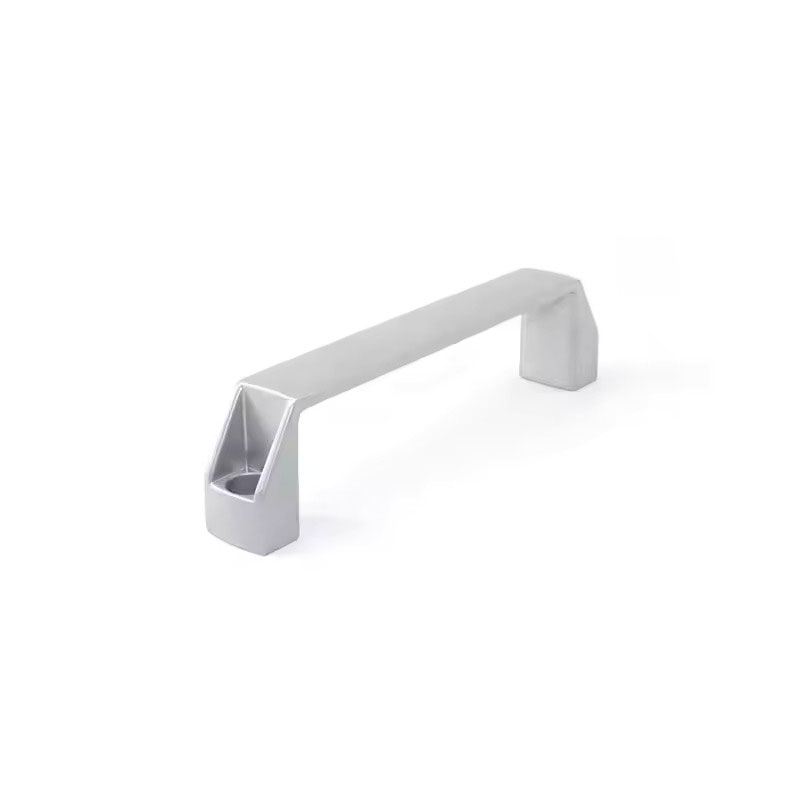Why Choose Hardware Casting for Superior Automotive Parts?
2025-09-04
In the fast-evolving world of automotive manufacturing, precision, durability, and efficiency are paramount. One of the most critical components ensuring these qualities is hardware casting. But why has hardware casting become a preferred method for producing automotive parts? And how can it impact the overall quality and performance of vehicles?
Hardware casting provides a unique combination of design flexibility, material efficiency, and mechanical reliability. Unlike machining or forging alone, casting allows manufacturers to create complex geometries with fewer post-processing steps. This not only reduces production costs but also ensures that automotive components meet stringent safety and performance standards.
Modern vehicles demand parts that withstand extreme conditions, from high temperatures to heavy mechanical stress. Hardware casting meets these demands by using high-grade alloys that deliver strength without excessive weight. In applications such as engine components, suspension systems, and braking mechanisms, casting ensures uniformity and precision that directly translates to safer, more reliable vehicles.
Furthermore, automotive manufacturers increasingly rely on casting techniques for sustainability. Casting produces less waste compared to subtractive processes like CNC machining. In a world moving toward greener production, hardware casting is not only cost-effective but also environmentally responsible.
What Are the Key Parameters of Automotive Hardware Casting?
Understanding the technical parameters of hardware casting is essential for both manufacturers and clients seeking high-quality automotive components. The parameters influence performance, durability, and cost-efficiency, making them a core part of professional decision-making.
| Parameter | Description | Importance in Automotive Casting |
|---|---|---|
| Material Type | Commonly used materials include aluminum alloys, steel, copper, and zinc alloys. | Determines strength, corrosion resistance, and weight. Aluminum alloys are preferred for lightweight components. |
| Casting Method | Includes sand casting, die casting, investment casting, and centrifugal casting. | Each method impacts surface finish, dimensional accuracy, and production volume. |
| Tolerance Levels | Standard tolerances range from ±0.05mm to ±0.5mm depending on complexity. | Ensures parts fit perfectly in assemblies, reducing rework and failure rates. |
| Surface Finish | Varies from rough sand-cast textures to smooth die-cast surfaces. | Affects aesthetic quality, performance under friction, and post-processing requirements. |
| Mechanical Strength | Measured in tensile strength (MPa), hardness, and fatigue resistance. | Critical for safety-critical components like gears, brake calipers, and engine parts. |
| Heat Treatment | Optional processes such as annealing or quenching. | Enhances mechanical properties, improves wear resistance, and extends part life. |
| Dimensional Stability | Measures shrinkage and deformation during cooling. | Ensures consistent production quality across batches. |
| Production Volume | From prototype to mass production. | Die casting is suitable for high-volume parts, while sand casting works well for low-volume, complex components. |
By carefully optimizing these parameters, manufacturers ensure that automotive parts achieve a perfect balance between strength, precision, and cost-efficiency.
How Does Hardware Casting Improve Automotive Part Performance?
Automotive components face diverse challenges, including vibration, thermal expansion, and heavy load stress. The choice of hardware casting significantly impacts how well parts respond to these challenges.
-
Enhanced Structural Integrity
Casting creates a near-net shape with uniform density, minimizing weak points and reducing the risk of fractures. For engine blocks, transmission housings, or suspension components, this structural reliability is vital. -
Design Flexibility and Complexity
Unlike forging or machining, casting allows intricate geometries without additional assembly. For instance, cooling channels inside engine parts or integrated mounting points can be cast directly into the component, reducing labor costs and improving efficiency. -
Cost-Efficiency and Waste Reduction
Casting minimizes material waste, as molten metal is poured precisely into molds. Compared to CNC machining, which removes material from a solid block, casting optimizes material use and lowers production costs. -
Durability Under Harsh Conditions
High-performance casting alloys withstand thermal cycles, corrosion, and mechanical wear. Automotive parts like brake components, suspension brackets, and housings benefit from longer lifespans and fewer failures. -
Consistent Quality for Mass Production
Advanced casting technologies, especially die casting, allow consistent replication of parts. This uniformity is crucial for automotive assembly lines, where even minor deviations can disrupt production efficiency.
Frequently Asked Questions (FAQs) About Automotive Hardware Casting
Q1: What types of automotive parts are best suited for hardware casting?
A1: Hardware casting is ideal for components requiring complex shapes, strength, and heat resistance. Common applications include engine blocks, transmission housings, brake calipers, suspension brackets, and structural components. It is especially beneficial for parts where traditional machining would be expensive or impractical.
Q2: How does hardware casting compare to forging and machining in automotive applications?
A2: While forging produces extremely strong and dense components, it is limited in geometric complexity. Machining offers precision but generates significant material waste and higher costs for complex parts. Hardware casting combines the benefits of both: it allows complex designs, reduces waste, maintains mechanical strength, and is more cost-effective for high-volume production.
Q3: What quality control measures are applied in automotive hardware casting?
A3: Quality control includes dimensional inspections, non-destructive testing (NDT) such as X-ray or ultrasonic scanning, hardness testing, and mechanical stress tests. Advanced techniques like computer-aided simulation predict shrinkage and stress points, ensuring consistent, defect-free production.
Q4: Can hardware casting handle high-temperature applications in vehicles?
A4: Yes, casting alloys like aluminum-silicon, high-grade steel, and copper alloys are engineered to withstand extreme temperatures. This makes them suitable for engine components, exhaust parts, and other heat-intensive applications. Heat treatment processes can further enhance thermal resistance and mechanical performance.
In conclusion, hardware casting has become an indispensable method in the production of high-performance automotive parts. It combines structural integrity, design flexibility, cost efficiency, and environmental sustainability, making it a preferred choice for manufacturers worldwide. With proper material selection, optimized casting parameters, and advanced quality control, automotive components achieve superior durability, precision, and reliability.
At Losier, we specialize in providing high-quality hardware casting solutions for automotive and industrial applications. Our team ensures every component meets rigorous performance standards while optimizing production efficiency. If you are looking for durable, precise, and cost-effective casting solutions for your automotive parts, contact us today to discuss how Losier can enhance your manufacturing capabilities.



